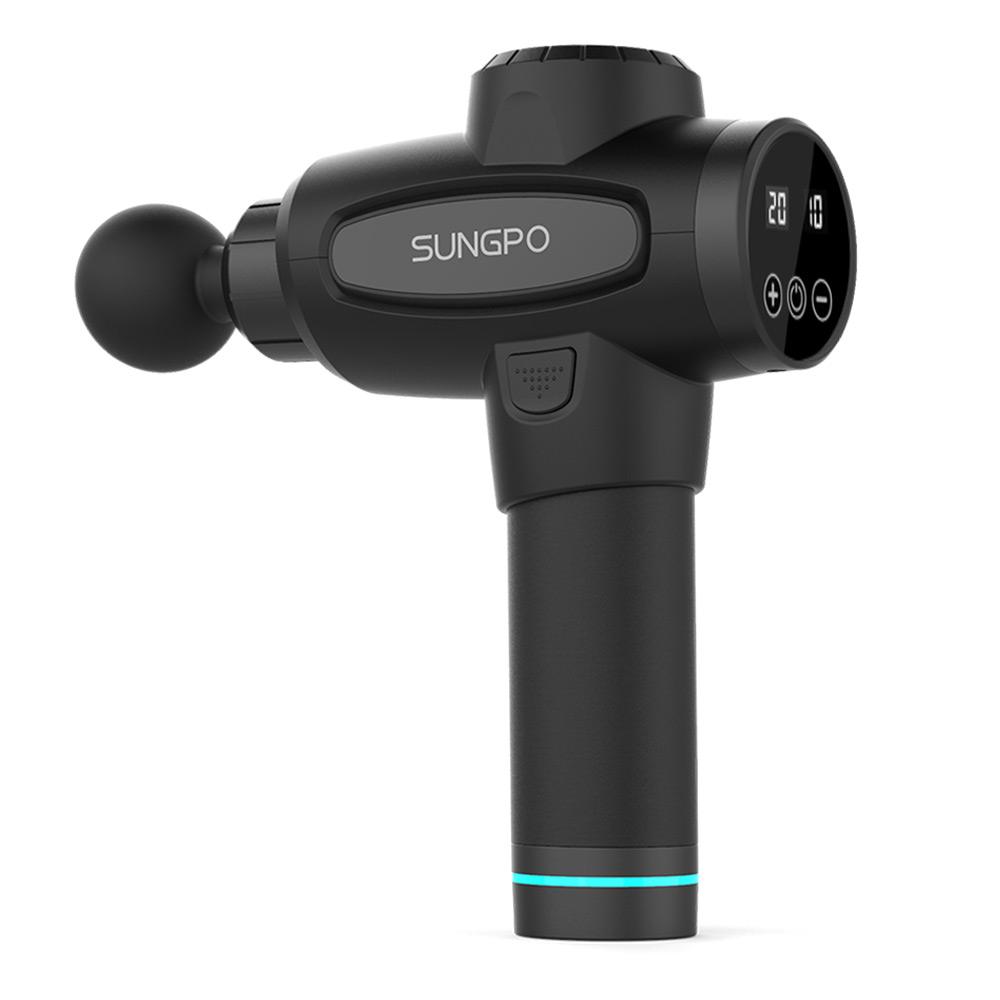
Some come with adjustable heads and handles (making it easier to reach certain body parts). Search online for reviews to start, Malek says.īecause massage guns come in different sizes, consider your own comfort when it comes to how heavy and how large you want it to be, and which muscles you’ll want to use it on, Malek says. Top-of-the-line guns can cost several hundred dollars, which is why you should evaluate your purchase carefully. What to Look for if You Decide to Buy a Massage Gun Also, if you know you bruise easily, make sure the speed and attachment are suitable for your tolerance, Malek says. “Remember that the goal is to relax and feel better, not suffer,” Malek says.Īnd if you have nerve sensitivity or deep vein thrombosis, or you’re pregnant, consult with your doctor before using a massage gun. If you feel more sore after using a massage gun, you’ve pushed too hard or too long. Malek recommends avoiding going over any area of acute pain or injury, which can aggravate the issue. And if you have an injury, check with a physical therapist before using a massage gun on it.

Some guns even have a monitor connected to an app to direct you how hard and how long to go. (Typically there’s a button or switch on the gun to increase pressure.) Stay in one spot for up to 15 seconds or sweep an area for two minutes. “Add pressure as tolerated but not too aggressively,” Malek says. To use the gun effectively, find an area on your body that feels tight and start by moving the gun over the bulk of the muscle. “For warmups, using a massage gun can reduce soreness or stiffness from workouts from the day or days prior and activate muscles before a session,” Abarca says.Īccording to Abarca, they’re recommended to be used within 48 hours following workout to help reduce soreness and improve recovery. You can use a massage gun whenever you want to relieve muscle tension, but it’s most commonly used before and after workouts.
#Pro fit massage gun how to#
RELATED: Quick Fixes for Sore Muscles How to Use a Massage Gun And because you don’t need equipment, it’s more convenient. Static stretching, on the other hand, uses slow, sustained stretches on a muscle to promote relaxation and reduced feelings of muscle tightness, and like foam rolling, it has more research to support its benefits, Malek says.įor some people, stretching may be more relaxing because of the nonpercussive impact to the muscle, Malek says. You might get similar effects by holding a massage gun to one area, but it doesn’t qualify as myofascial release because of its rapid, percussive nature, Malek says.Īn advantage of the gun? It can target specific areas of the body better than a foam roller, especially those that are hard to reach, like the pectoral muscles in your chest, your biceps, and psoas muscles (which run from your low spine to the tops of the femur bones in your legs), says Brian Abarca, personal trainer certified through Passaic County Community College and owner of Abarca Fitness in Union City, New Jersey. Yet the gentle to moderate sustained pressure you apply with a foam roller can help tight areas of the body relax or release, Malek says. For various reasons, fascia can get tight, even inflamed, and when that happens, your ability to move can be hampered.

Fascia is the connective tissue that surrounds muscles, blood vessels and nerves. Which you choose may depend on personal preference.įoam rolling uses myofascial release to decrease muscle tension. So they’ll offer a similar effect as foam rolling and massage. “Massage guns do similar things as massage, but the way they go about it is different,” Malek says. The Difference Between Massage Guns, Foam Rollers, and Other Muscle Recovery Options And there is some evidence that vibration therapy can have the same effect as massage therapy in terms of limiting delayed onset muscle soreness (the tightness and achiness you feel a day or two after a tough workout). “Massage can reduce tension in muscles and impact flexibility, reducing muscle stiffness, increasing blood flow, and decreasing muscle soreness,” Malek says.

Those are massage, a treatment that your muscles being kneaded and manipulated by another person, and vibration therapy, which involves placing a vibrating device on certain parts of your body.

While Malek says the evidence is scant to conclusively link training benefits with massage guns, there is research to support the two modes of therapy that behind the percussive massage treatment of massage guns. RELATED: All About Post-Workout Muscle Recovery and How to Let Muscles Heal “You can use a massage gun whenever you’re looking to relieve some muscle tension, but it may be especially beneficial to use after a workout to promote recovery with reduced muscle soreness,” says Leada Malek, CSCS, a sports physical therapist in San Francisco who’s board-certified through the American Board of Physical Therapy Specialists.


 0 kommentar(er)
0 kommentar(er)
